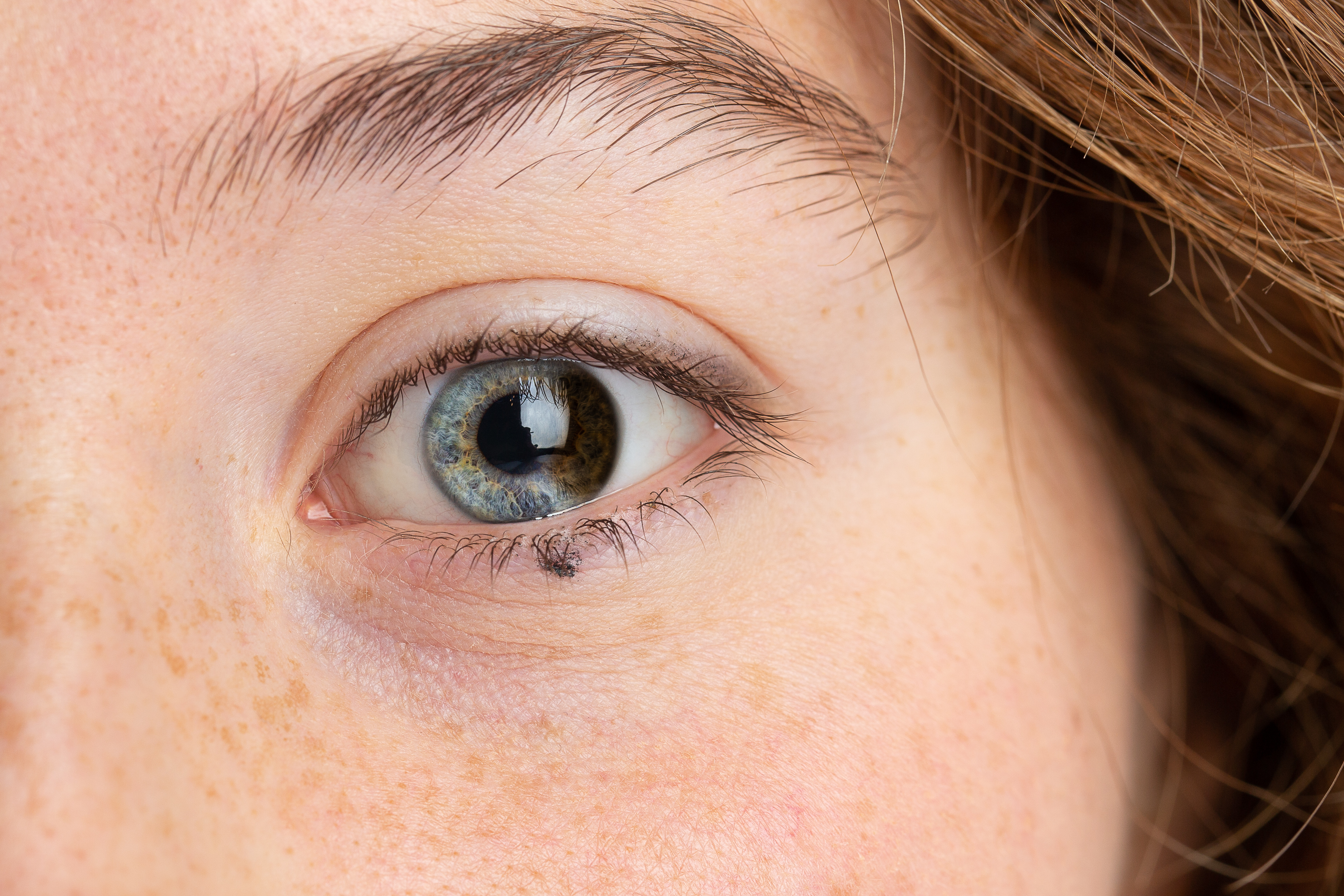Actress Jane Seymour, Texas Rangers pitcher Max Scherzer, and the cat in the header of this article. Not three figures you might typically put together, but they all have something in common: heterochromia.
What is heterochromia?
Formally known as heterochromia iridum or iridis, but usually shortened to just heterochromia, this often striking feature is characterized by color differences in the iris, the colored region of the eye. The kind most often thought of is complete heterochromia, where one iris is a different color from the other. However, there are also partial forms of heterochromia, split into two types – sectoral and central.

An example of sectoral heterochromia in a human eye.
Image credit: sruilk/Shutterstock.com
In sectoral heterochromia, there’s a slice-of-pie-like or sometimes speckled section within an iris that’s a different color to the rest; this is the type seen in Independence Day actor Bill Pullman. There are also two colors within the same iris in central heterochromia, but it instead occurs in the form of an inner ring.
How rare is heterochromia?
Heterochromia is pretty rare in humans, thought to affect fewer than 200,000 people in the US. However, if it wasn’t already obvious from our choice of header image, humans aren’t the only species that can have this feature. It’s common in animals like horses, cats, and dogs, particularly in breeds such as Siberian huskies, border collies, and Dalmatians. Heterochromia has even been seen in a koala.
What causes heterochromia?
Professor Charles Xavier explains it best: a lot of the time, it’s a very groovy mutation. In other words, there’s been a change in the DNA sequence of the genes that influence eye color, leading to color differences between or within the iris. This can happen for unknown reasons, or it can be inherited as an autosomal dominant trait – a child only needs one parent to pass down the mutation for them to develop the trait. For those with this kind of isolated mutation, heterochromia is harmless.
However, there are other circumstances in which heterochromia can arise. In humans, this includes congenital conditions such as Waardenburg syndrome, a genetic condition that can affect the coloring of skin and hair alongside the eyes. There’s also neurofibromatosis type 1, a condition characterized by the growth of tumors along nerves, but also features heterochromia as a symptom.
Heterochromia can also be acquired as the result of injury, conditions such as glaucoma and the eye drops that treat it, tumors, and even a serum used to thicken eyelashes.
Can heterochromia be treated?
Whilst there’s no medical treatment for heterochromia itself, it’s worth getting it checked out by a doctor to make sure it’s not the result of an underlying condition that does need treatment. If it’s harmless – which it often is – but someone isn’t in the same camp as Professor X and would prefer to have both their eyes be the same color, doctors might be able to prescribe them with color contact lenses.
All “explainer” articles are confirmed by fact checkers to be correct at time of publishing. Text, images, and links may be edited, removed, or added to at a later date to keep information current.
The content of this article is not intended to be a substitute for professional medical advice, diagnosis, or treatment. Always seek the advice of qualified health providers with questions you may have regarding medical conditions.
Source Link: Heterochromia: The Facial Feature That Affects Less Than 1 Percent Of People